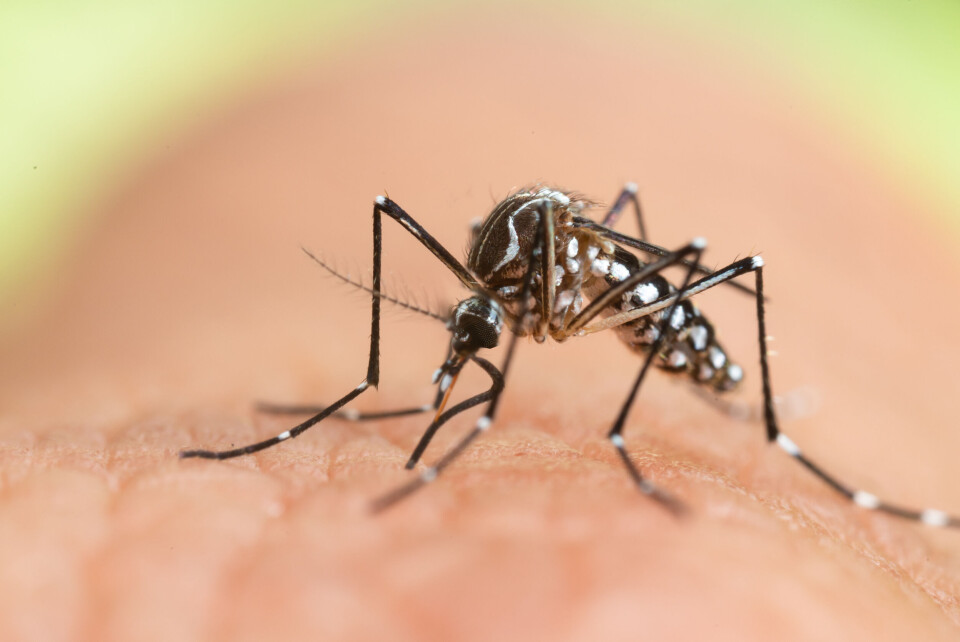-
Trump calls for Marine Le Pen to be freed (but she is not in prison)
US president said her embezzlement court case was a ‘witch hunt’
-
France’s €3 book delivery fee challenged in EU court by Amazon
Online retailer said measure is protectionist and ‘in breach of EU laws’
-
Allergies: How to know pollen levels in your commune of France
Interactive online maps can track and predict how pollen is changing in the air
64 French departments on red alert for tiger mosquitoes
The good weather has helped the insect – which has a black body and white stripes – to spread, with residents warned to stay vigilant

More than 60 departments in France are currently on red alert for tiger mosquitoes, with more expected to turn red soon, as a result of the current good weather.
Mosquito monitoring site Vigilance Moustiques has placed 64 departments in mainland France on red alert, equating to 67% of the country.
Red alert means that the insect is present and active. Orange means that the mosquito is not yet spreading too fast, but the situation could change in the coming weeks.
A total of six departments are on orange alert. The monitoring website states: “We can see that departments that are on orange alert move into red alert sooner or later.”
There are also 26 departments on yellow alert, which means that the situation is still good, but being monitored.
Stéphane Robert, president of Vigilance Moustiques, told Europe1: “Hot weather immediately leads to multiplication and proliferation [of the insects].
“It is normally said that a tiger mosquito takes ten days to transform from larva to adult if it is 23°C during the day and 15°C at night. But when it's 30 degrees during the day, it only takes six or seven days! It goes much faster.”
The tiger mosquito season usually begins in May and can last until November.
At the start of May, the Health Ministry warned that tiger mosquitoes were becoming more common in France, and reminded people that they can carry serious illnesses such as chikungunya, dengue, and zika.
People are warned to “stay alert” and try to avoid being bitten as much as possible, especially in red zones (such as by wearing longer clothing, and by using anti-mosquito products). The mosquitoes can be recognised by their black bodies with white marks.
If you are bitten and later develop joint or muscle pain, headaches, a rash, irritated eyes or a fever, you are advised to consult a doctor as soon as possible.
Tiger mosquitoes arrived in France in the Alpes-Maritimes in 2004, and have since spread across most of the country.
Residents are advised to empty containers that hold stagnant water, such as gutters, toys and plant pots – or fill these with sand to allow watering but no standing water – as stagnant water encourages the insects to lay eggs and gather.
Related articles
Mosquitoes in France: A scientist's advice for keeping them away
France on alert for tiger mosquitoes as temperatures rise
France fighting dangerous tiger mosquito
Traps set in trial attempting to control tiger mosquitoes in France
























